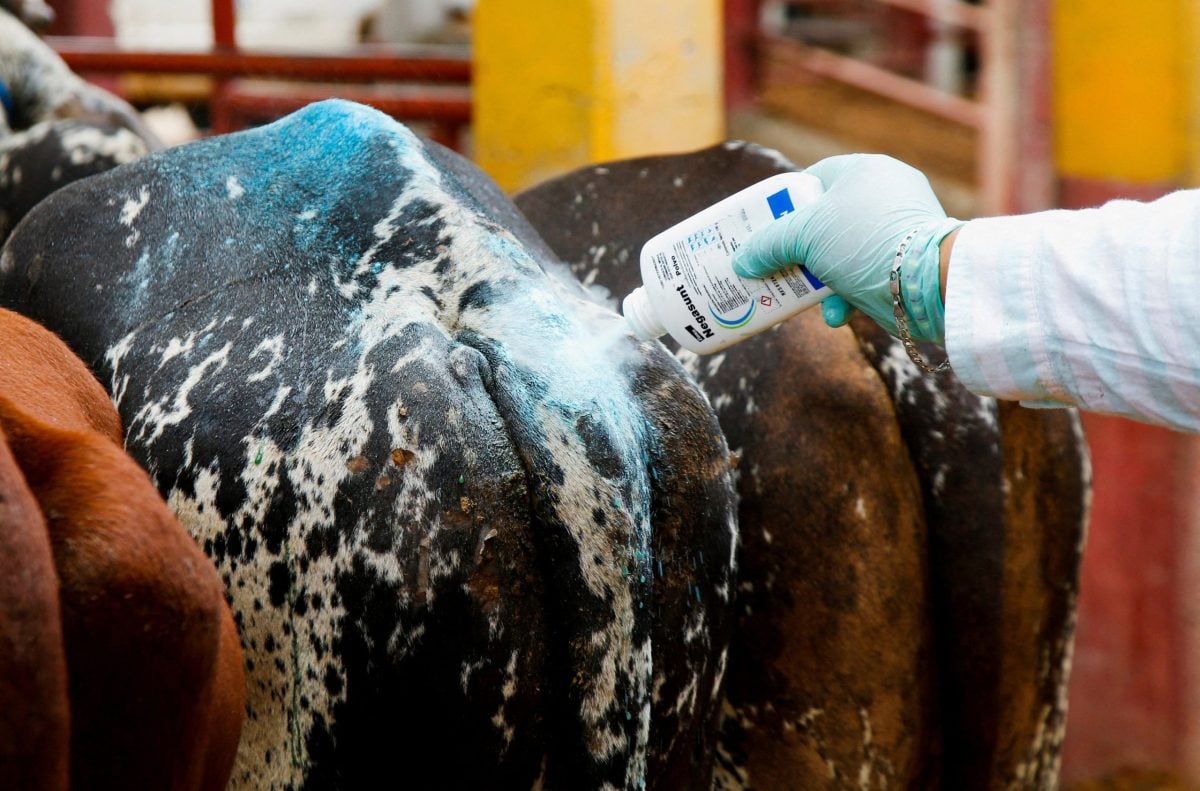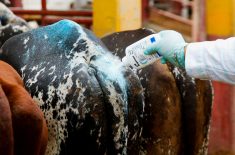The roof on Ken Munro’s machine shed looked fine when he drove past it on his way to work one morning earlier this month. But a text from his son told a different story.
“It had collapsed in the middle of the night,” said Munro, an Innisfail-area grain farmer.
Since early December, more than a dozen barns have collapsed in central Alberta, including one in Ponoka that killed more than 30 cattle. A mix of record-high snowfalls and structural issues is believed to be the cause of the collapses.
Read Also

U.S. not ready to lift Mexican cattle ban over screwworm, Agriculture Secretary Rollins says
The U.S. is not yet ready to reopen its border to Mexican cattle amid an outbreak of the flesh-eating New World screwworm parasite, Agriculture Secretary Brooke Rollins said, but she is pleased with Mexico’s efforts to contain the pest.
Munro was “concerned” about the 33-year-old building, which was similar in design to a neighbour’s dairy barn that had started sagging under the heavy snow load in mid-December. Munro estimates there was around 18 inches of snow on the roof at the time of its collapse.
“Snow never stayed up on that roof ever before,” he said. “It was a tin roof with a fair slope to it, and snow always slid off.”
But because of its size, “it was almost impossible to get the snow off it. (Central Alberta farmers) are going to have to figure out how to get the snow off our roofs,” said Munro, who has been busy removing snow from his house and other outbuildings since the collapse.
Munro had two combines, two tractors, a swather, and a truck in the building, which he says is now “toast.”
“It’s about $120,000 to replace the building,” he said.
And though the building is on his insurance policy, the collapse isn’t covered.
“It caught me by surprise,” he said. “I thought when we were insuring it, we were insuring it for everything.”
That’s a common misconception, said Gord Cowan, president of Insurance Brokers Association of Alberta.
“Each company has different wording (for their insurance coverage), and each wording deals with collapse differently,” Cowan said. “We urge all insureds to make sure they’re discussing with their broker the specific coverage that they’re buying.”
Most of the recent cases involve older buildings that don’t meet current building code requirements, he said.
“We’re seeing buildings where the failures are structural in nature,” said Cowan. “Rafters are too far apart, and they’re simply not capable of handling the load.”
Even if a building that has collapsed is listed on an insurance policy, a claim may be denied if it isn’t built to current standards.
“It’s important, as a farmer or rancher, to make sure we’re doing our due diligence and making sure our buildings are up to code,” said Cowan.
Producers who are worried about the snow load should watch for sagging and other signs of distress in their structures.
“Generally speaking, a building will start to show some signs of collapse ahead of time,” said Cowan, who urged producers to call their insurance companies at the first sign of any problems. That advice comes too late to help Munro, who may not be able to afford to rebuild the shed without insurance.
“We really don’t know where we’re headed in the grain markets,” he said. “I wouldn’t blame anybody for being a little cautious at this point in time.”
— Jennifer Blair is a reporter for Alberta Farmer Express at Red Deer, Alta.












